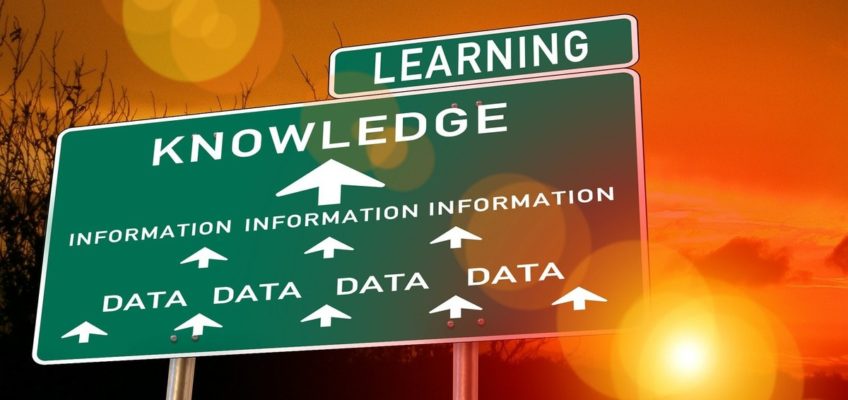How can we best leverage the wealth of data on schools to improve teaching and learning?
By Eve Debbage, Project Officer at Teacher Tapp
There is no shortage of education data on schools. It is gathered by a wide range of organisations and individuals to meet a variety of objectives. From government polls and online censuses, to mobile apps that deliver daily teacher surveys, technology has given us access to all the data we could want, both big and small.
Schools are increasingly taking advantage of technological advances to collect their own data. Information management software such as SIMS and MIS has been an established part of the classroom for many years. Once a tool used primarily for registration and storing student records, teachers now rely on these software packages to provide all the data they need for Ofsted inspections and to support their teaching and learning.
From government polls and online censuses to mobile apps that deliver daily teacher surveys, technology has given us access to all the data we could want, both big and small Share on XMany schools use innovative assessment tools and software applications to provide real-time data on students’ progress. But collecting data is a pointless exercise unless we do something useful with it.
there is a lot to be learned from reviewing data collected by surveys of the wider teaching profession Share on XHow Can School Leaders Use Data from Teacher Surveys?
When it comes to improving teaching and learning, there is a tendency to focus on student data, and data gathered internally. However, there is a lot to be learned from reviewing data collected by surveys of the wider teaching profession. As debates over the use of standardised testing rage on amidst record number of teachers leaving the profession, surveys of students and teachers are being used more frequently as a means of measuring the performance of a school.
Schools are increasingly taking advantage of technological advances to collect their own data Share on XSurveys provide immediate insights into teacher satisfaction levels — which can have a significant impact on the effectiveness of teaching and learning. So how can school leaders use data from teacher surveys to improve teaching and learning?
- Make changes to retain high-quality staff. Staff retention in schools is a nation-wide problem. Teacher surveys provide valuable insight into their satisfaction levels. School leaders should review teachers’ perceptions on key issues and evaluate their school to determine if there might be issues. Often, addressing simple causes of dissatisfaction can significantly raise morale and performance.
- Identify the teacher’s needs for specific resources and spend the budget wisely. Teachers are in the classroom every day so using their feedback on which resources work, which don’t and which they feel they are missing, is a logical way to determine where to spend the school budget and be rid of what isn’t working and replace it with something teachers feel will support effective teaching and learning.
- Identify CPD needs. Continuing Professional Development (CPD) is crucial to the effectiveness of teaching and learning. The teaching profession is continually evolving as government expectations change, so teachers need ongoing training to ensure their teaching meets the standards set. Data from teacher surveys provides school leaders with an insight into potential areas for CPD, but also barriers to teachers’ participation in their development. If 80% of teachers feel their school does not support CPD or they cannot find the time for it, perhaps changes need to be made.
- Update school policies. Teacher surveys can reveal teachers’ perceptions on everything from staff dress codes to salaries. If there is a common theme of dissatisfaction amongst teachers, a simple amendment to school policy could increase staff satisfaction. Even if changing policy is not appropriate, use the data to invite feedback and start a discussion with staff.
- Gain new ideas for developing best practice. Data from teacher surveys can often inspire positive change in schools — or at least start useful discussions in the staffroom. Identify trends in data and consider these findings in terms of your school. If 90% of teachers polled feel they don’t have time for lunch, perhaps school leaders should consider making changes to provide teachers with a suitable break, so they return to the classroom ready to deliver their best teaching.
School leaders, government and other organisations which lead the way in shaping our schools, can learn a great deal from listening to teachers. If teachers feel their voices are heard and positive changes implemented, they are more likely to feel happy in their work and less likely to leave the profession.
Data from teacher surveys can often inspire positive change in schools — or at least start useful discussions in the staffroom Share on X
Is an Obsession With Student Data Damaging Teaching and Learning?
The pressure of Ofsted and league tables has led to an obsession with pupil progress data. Advances in education technology make it relatively easy for schools to amass big data on their student population and many schools rely on this data to drive improvements in teaching and learning. But is this endless quest to collect more and more student data actually impeding teachers’ ability to teach? If there is no clear purpose for data collection it becomes a pointless exercise which consumes precious time in a teacher’s day and zaps their energy for doing their jobs and doing them well. While some data shines a light on progress which enables targeted interventions and differentiated teaching, focussing too much on it can result in significant losses in other areas.
Budgets are limited for the majority of schools, so ensuring that the most effective technology is in place is vital for maintaining effective teaching Share on XIn a classroom where data is everything, high achievers will be constantly rewarded by graphs trending in the right direction and numbers which signify their success. But pupils who are not meeting expected performance targets will be continually reminded of their underperformance, down to the exact percentage. This could be extremely damaging for the morale and motivation of these students.
Student data can be a valuable resource in understanding progress, adapting teaching practice and improving student outcomes, but using it in isolation can be dangerous. Software can record and analyse quantifiable data but this can often be misleading or give an incomplete picture if it is not viewed in context. And there are certain types of qualitative data that technology is just not designed to gather. No algorithm will record how a nervous child who has always been too frightened to put their hand up in class does so for the first time. Yet this would be an important milestone in a child’s learning and a clear indicator for the teacher that they’re on the right track.
Gathering huge amounts of data simply because we have the technological capacity to do so is pointless and could reduce the resources available to achieve improvements Share on XStudent data is often touted as the ultimate resource for demonstrating accountability. Not just to HMRC but to parents and carers. Parents are bombarded with statistics about how their child is performing in school, how they compare to the national average and how much they need to progress by the end of the year. Some schools even send text updates and photographs so that families can share in a child’s school day. Including parents in their child’s education is a valuable and important role of schools, but it can go too far. Access to endless pupil data can result in parents becoming excessively demanding of the school and the child. Parents should be involved in but not leading their child’s education. Equally, where a child perceives excessive pressure to perform, they may become anxious and depressed.
Schools should continually review the data collection software and hardware they use Share on XThe technology available within schools and to external organisations has allowed access to a wealth of education data. Schools should continually review the software and hardware they use to collect this data. Budgets are limited for the majority of schools, so ensuring that the most effective technology is in place is vital for maintaining effective teaching and learning.
Both school leaders and teachers must carefully consider what data they need to collect and why. Gathering huge amounts of data simply because we have the technological capacity to do so is pointless and could reduce the resources available to achieve improvements. Education data — if used effectively — can significantly enhance teaching and learning, resulting in a more positive experience for pupils and their teachers.









